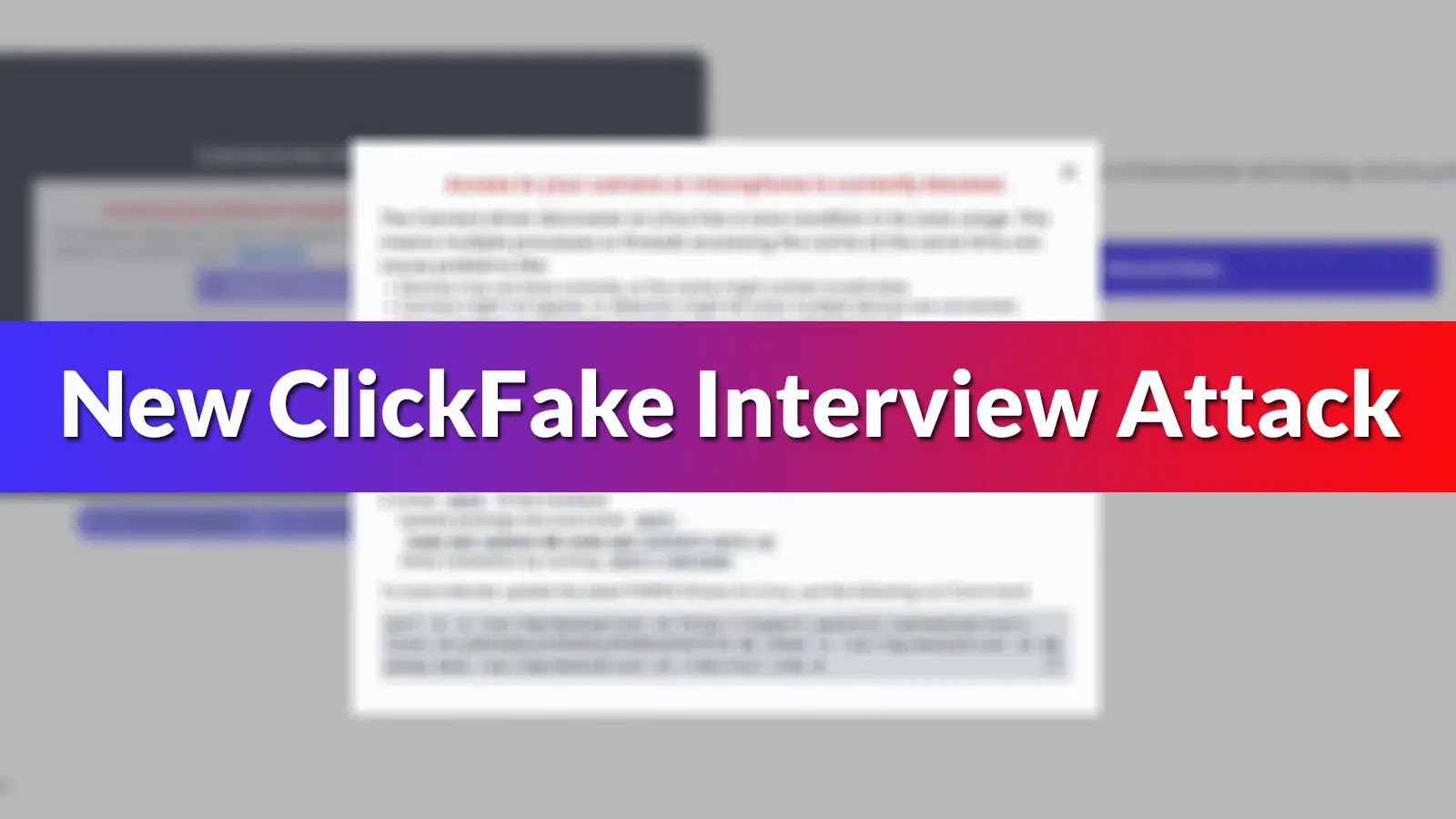
New ClickFake Interview Attack Using ClickFix Technique to Deliver GolangGhost Malware
The Resurgence of Lazarus: “ClickFake Interview” Employs ClickFix to Deploy GolangGhost
The recruitment landscape, a fertile ground for legitimate talent acquisition, has regrettably become a sophisticated new battlefront for threat actors. A recent and particularly insidious campaign, dubbed “ClickFake Interview,” demonstrates a chilling evolution in social engineering tactics. Leveraging familiar lures and a refined technical approach, this attack, attributed to the notorious Lazarus Group, poses a significant threat to unsuspecting job seekers and organizations alike.
Understanding the ClickFake Interview Lure
The “ClickFake Interview” campaign represents a concerning resurgence of the Lazarus Group’s long-standing recruitment-themed spear-phishing attempts. This iteration centers around the freshly registered domain, waventic[.]com, which serves as the initial entry point for victims. The objective is clear: to entice job candidates into a meticulously crafted malicious process under the guise of an authentic interview.
Candidates navigating this deceptive scheme are presented with a highly polished and interactive JavaScript form, designed to exude legitimacy. This sophisticated front end aims to build trust and encourage continued engagement, drawing victims deeper into the attacker’s trap. The seamless user experience is a hallmark of this campaign, highlighting the group’s investment in detailed social engineering.
The ClickFix Technique: A Reused Template for Deception
The technical underpinning of the “ClickFake Interview” campaign is the “ClickFix” web template. Threat intelligence from Sekoia.io researchers confirms that this template is not new; it was first profiled back in March, indicating a reuse of successful infrastructure and attack methodologies by the Lazarus Group. The recycling of this template underscores the group’s efficiency and their tendency to refine and redeploy effective tools rather than developing entirely new ones for each campaign.
The “ClickFix” template’s effectiveness lies in its ability to present a convincing, interactive web interface that guides the victim through seemingly legitimate steps. This level of sophistication makes it difficult for an average user to distinguish between a genuine recruitment portal and a malicious one, especially when coupled with the allure of a new job opportunity.
GolangGhost: A Cross-Platform Threat
The ultimate payload delivered by the “ClickFake Interview” attack is the cross-platform malware known as GolangGhost. The campaign’s progression is insidious: after completing the JavaScript form, victims are prompted to download what is masqueraded as a “webcam driver.” This seemingly innocuous software component is, in reality, the dropper for GolangGhost.
GolangGhost’s cross-platform nature is a critical concern, as it signifies the malware’s ability to operate effectively across various operating systems. This significantly expands the potential victim pool and complicates defensive strategies. Once installed, GolangGhost provides the attackers with a foothold into the victim’s system, enabling a range of malicious activities from data exfiltration to further network compromise.
Remediation Actions and Proactive Defense
Protecting against sophisticated recruitment lures like “ClickFake Interview” requires a multi-layered approach encompassing both technical controls and employee education.
- Verify Recruitment Communications: Always independently verify job opportunities and recruitment communications, even if they appear to originate from legitimate companies. Use official company websites to confirm job postings and contact details.
- Inspect URLs Carefully: Before clicking any links in recruitment emails or messages, hover over them to inspect the URL. Look for subtle misspellings, unusual domain extensions, or discrepancies that indicate a malicious site.
- Scrutinize Download Requests: Be highly suspicious of requests to download software, especially “drivers” or “applications” during an interview process. Legitimate companies rarely, if ever, require this.
- Implement Email Security Solutions: Deploy robust email security gateways that include advanced threat protection, URL rewriting, and sandboxing capabilities to detect and block malicious emails.
- Endpoint Detection and Response (EDR): Utilize EDR solutions to monitor endpoint activity for suspicious processes, file modifications, and network connections indicative of malware execution.
- Network Segmentation: Implement network segmentation to limit the lateral movement of malware within the network should an endpoint be compromised.
- User Awareness Training: Conduct regular and realistic security awareness training that specifically addresses social engineering tactics, phishing, and recruitment scams. Emphasize the importance of reporting suspicious activity.
- Application Whitelisting: Consider implementing application whitelisting to prevent unauthorized executables, like GolangGhost, from running on corporate endpoints.
Tools for Detection and Mitigation
Leveraging appropriate cybersecurity tools is crucial for identifying and mitigating threats like the “ClickFake Interview” campaign.
| Tool Name | Purpose | Link |
|---|---|---|
| Phishing Simulators | Train employees to identify and report phishing attempts, including recruitment scams. | KnowBe4, Cofense |
| Email Security Gateways (ESG) | Filter malicious emails, detect phishing links, and quarantine suspicious attachments. | Proofpoint, Mimecast |
| Endpoint Detection and Response (EDR) Systems | Monitor endpoint activity for malicious behavior, including malware execution and persistence. | CrowdStrike Falcon Insight, Microsoft Defender for Endpoint |
| Network Intrusion Detection/Prevention Systems (NIDS/NIPS) | Detect and block suspicious network traffic and communication with known command-and-control (C2) servers. | Snort, Suricata |
| Threat Intelligence Platforms (TIP) | Integrate and analyze threat data, including IOCs related to Lazarus Group and GolangGhost. | Palo Alto Networks Cortex XSOAR, Recorded Future |
Conclusion: Stay Vigilant in the Face of Evolving Threats
The “ClickFake Interview” campaign, with its sophisticated use of the “ClickFix” template and delivery of GolangGhost, serves as a stark reminder of the persistent and evolving threat landscape. The Lazarus Group’s methodical approach to social engineering, combined with their technical prowess, demands heightened vigilance from individuals and organizations alike. By understanding the tactics employed and implementing robust defensive measures, we can collectively enhance our resilience against these insidious attacks and protect our professional and digital lives.





